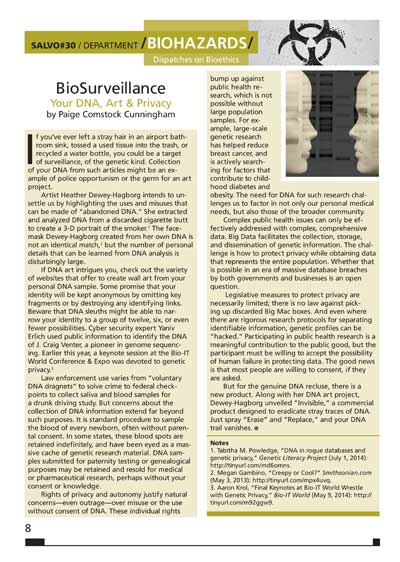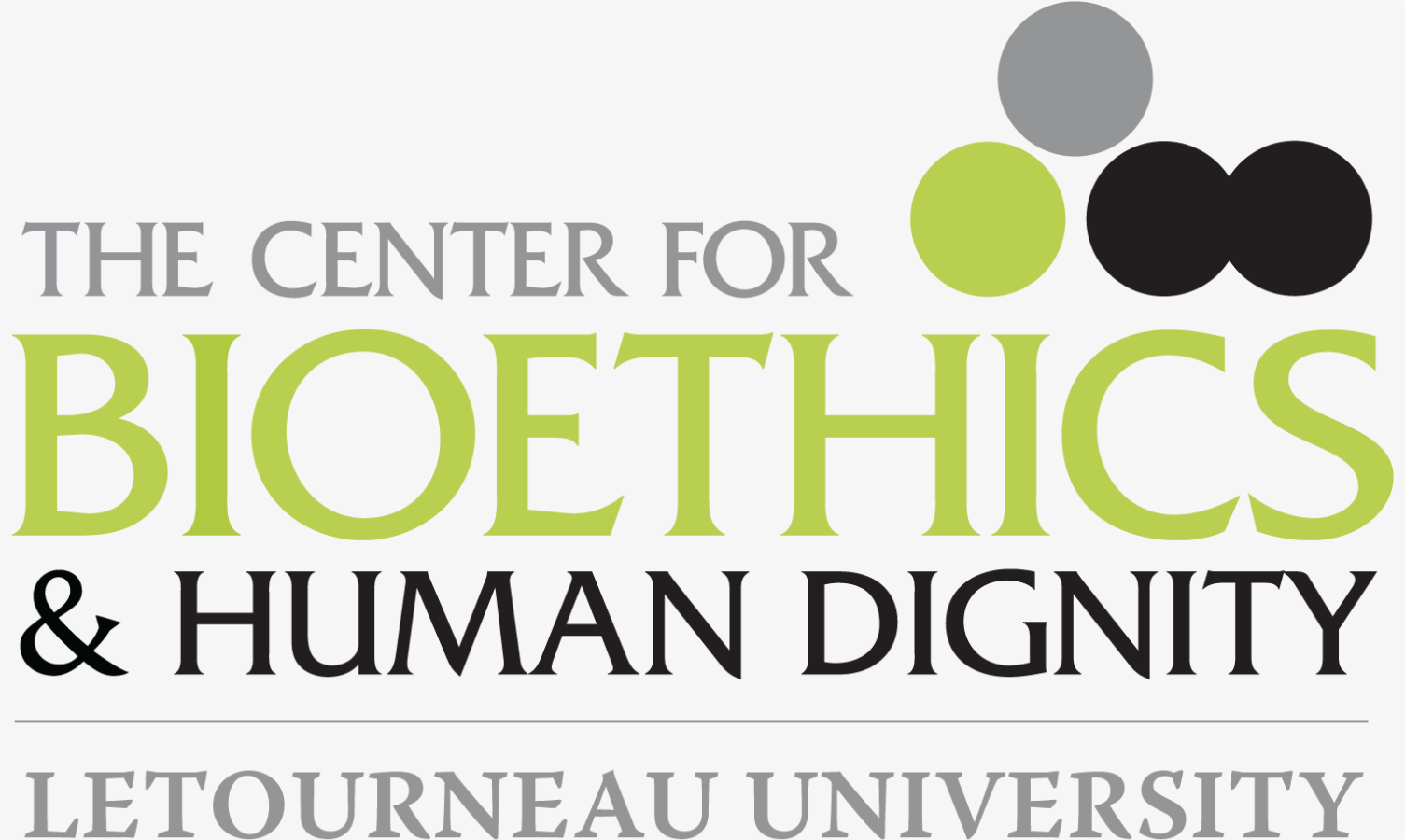
If you’ve ever left a stray hair in an airport bathroom sink, tossed a used tissue into the trash, or recycled a water bottle, you could be a target of surveillance, of the genetic kind. Collection of your DNA from these artifacts might be an example of police opportunism, or the germ for an art project.
Heather Dewey-Hagborg collected DNA from a cigarette butt and analyzed the DNA extracted from saliva on the butt, to create 3-D portrait of the smoker.[1] The face mask she created from her own DNA is not an identical match,[2] but the amount of personal details that can be learned from DNA analysis—ancestry and genetic risks for disease—is disturbing. Dewey-Hagborg intends to unsettle us, by highlighting the uses—and misuses—that can be made of “abandoned DNA.”
If DNA art intrigues you, check out the variety of websites that offer to create wall art from your personal DNA sample. Some promise that your identity will be kept anonymous, either by omitting key fragments, or by destroying any identifying links. DNA sleuths, however, might be able to narrow your identity to a group of twelve, six, or fewer possibilities. Earlier this year, a keynote session at the Bio-IT World Conference & Expo was devoted to genetic privacy.[3] Cyber security expert Yaniv Erlich used public information to identify the DNA of J. Craig Venter, a pioneer in genome sequencing.
Big Data facilitates the collection, storage, and dissemination of genetic information. Law enforcement use varies from “voluntary DNA dragnets” to solve a crime to federal checkpoints to collect saliva and blood samples for a drunk driving study. But concerns about collection of DNA information extend far beyond criminal purposes. It is standard procedure to sample the blood of every newborn, often without parental consent. In some states, these blood spots are retained indefinitely, and have been eyed as a massive cache of genetic research material. DNA samples submitted for paternity testing or genealogical purposes may be retained and resold for medical or pharmaceutical research.
Rights of privacy and autonomy justify natural concerns—even outrage—over misuse or the unconsented use of our DNA. These individual claims bump up against public health research, which is not possible without large population samples. For example, genetic research revealed how to reduce breast cancer risk for women carrying the mutation. An ongoing study is designed to sort out the genetic and environmental factors that contribute to childhood diabetes and obesity. The public health research need for DNA challenges us to prioritize not only personal medical needs, but also reducing diseases that affect the broader community.
Addressing complex public health issues can only be resolved with complex, comprehensive data. The challenge is to protect privacy and autonomy concerns, while obtaining data that represents the entire population. Whether that is possible in an era of massive database breaches by both governments and big business is an open question.
Legislative solutions are limited in protecting genetic privacy; there is no law against picking up discarded Big Mac boxes. Despite rigorous research protocols for separating identifiable information, genetic profiles can be “hacked.” Participating in public health research is a meaningful contribution to the public good, but the participant must be willing to accept the possibility of human failure in protecting data. The good news is that most people are willing to consent, if they are asked.
But for the genuine DNA recluse, there is a new product. Along with her DNA art project, Dewey-Hagborg unveiled “Invisible,” a commercial product designed to eradicate stray traces of DNA. Just spray “Erase” and “Replace,” and your DNA trail vanishes.
References
[1] Tabitha M. Powledge, “DNA in rogue databases and genetic privacy.” Genetic Literacy Project, July 1, 2014. http://www.geneticliteracyproject.org/2014/07/01/dna-in-rogue-databases-and-genetic-privacy/.
[2] Megan Gambino, “Creepy or Cool? Portraits Derived from DNA in Hair and Gum Found in Public Places,” Smithsonian.com, May 3, 2013. http://www.smithsonianmag.com/science-nature/creepy-or-cool-portraits-derived-from-the-dna-in-hair-and-gum-found-in-public-places-50266864/.
[3] Aaron Krol, “Final Keynotes at Bio-IT World Wrestle with Genetic Privacy,” Bio-IT World, May 9, 2014. http://www.bio-itworld.com/2014/5/9/final-keynotes-bio-it-world-wrestle-genetic-privacy.html.


